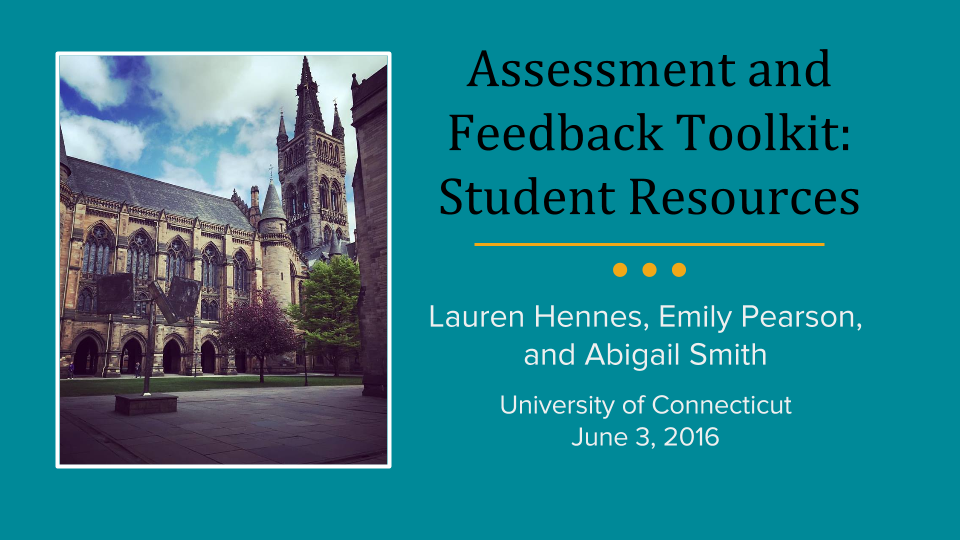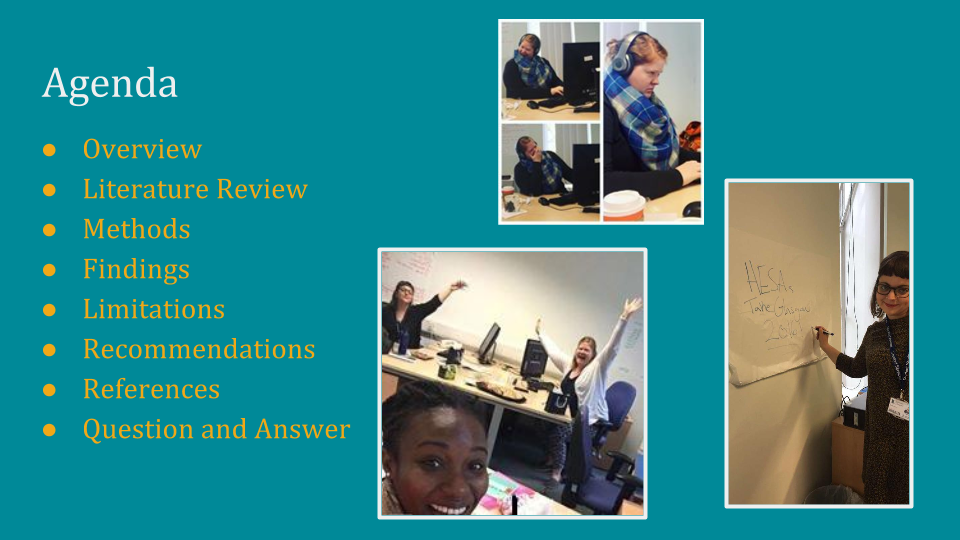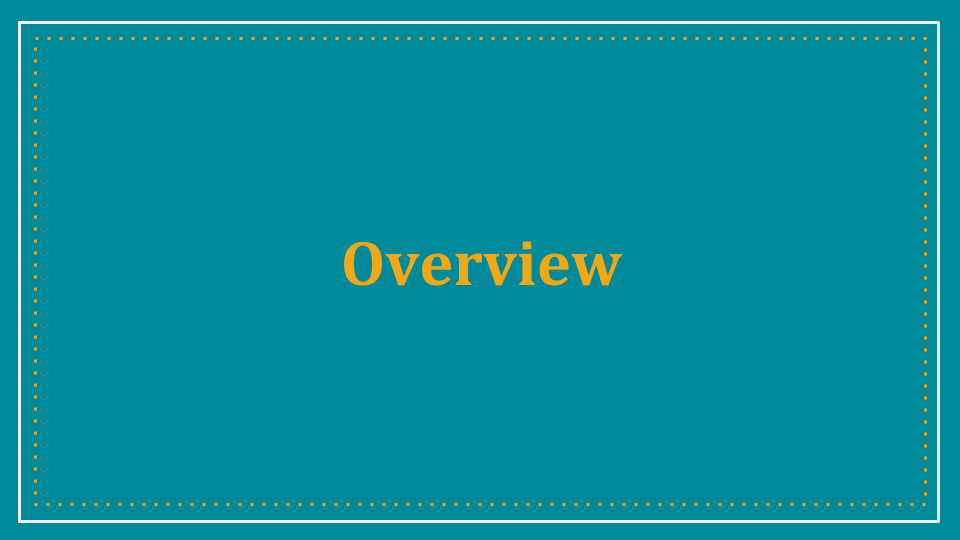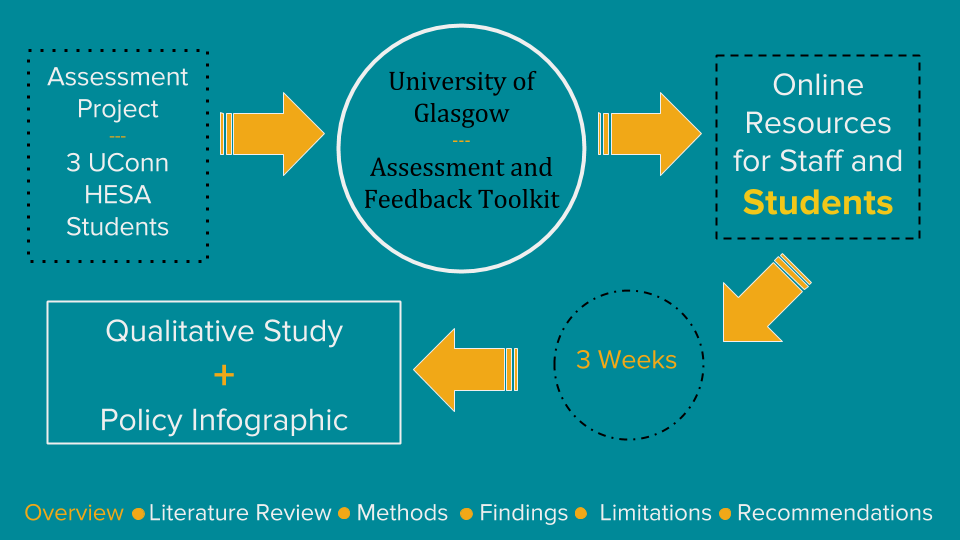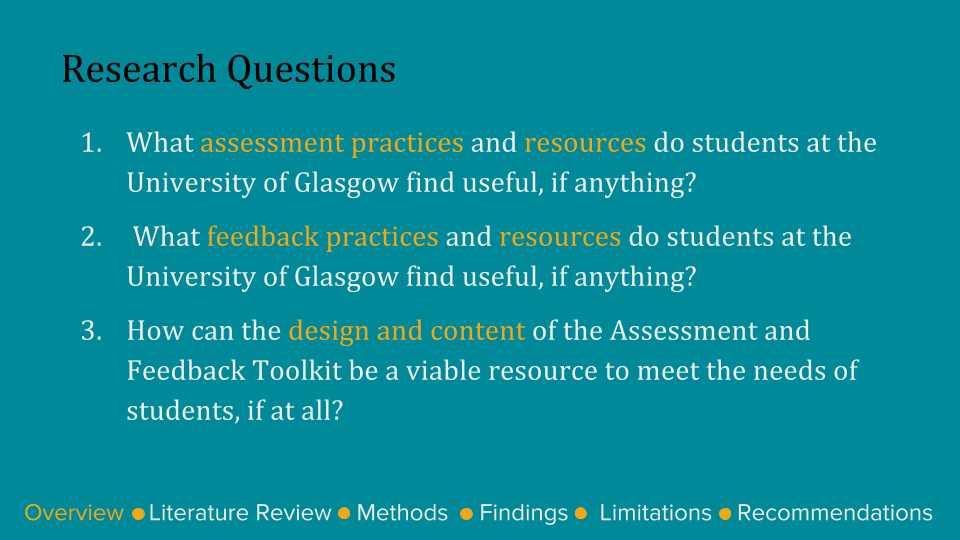Glasgow - Connecticut partnership in HE research
HESA at the University of Glasgow
The University of Glasgow partnered with three students from the University of Connecticut’s Higher Education and Student Affairs Master’s programme in order to research the student-facing component of the Toolkit.
Findings
Impact
During their time at the University of Glasgow, the HESA students sought to 'evaluate the assessment and feedback practices and resources' available at Glasgow, with a view to recommending a direction for change. They held a focus group with University of Glasgow students, and interviewed members of staff from different services across the University. Their findings helped to shape the Assessment and Feedback Toolkit, and reflect the demands of students at the University of Glasgow.
Part of their research involved looking into the existing policies on Assessment and Feedback at the University of Glasgow, and identifying key sections that are particularly relevant to our students. These are highlighted in the Assessment and feedback policy section of the Toolkit, and, where relevant, in the Information for students section.
Final presentation
The students presented on their findings to the Assessment and Feedback working group, members of the University Senate, and their contacts during their time at Glasgow. You can download the full presentation (the first slides of which can be seen below) or read the accompanying report to learn more about their findings.


